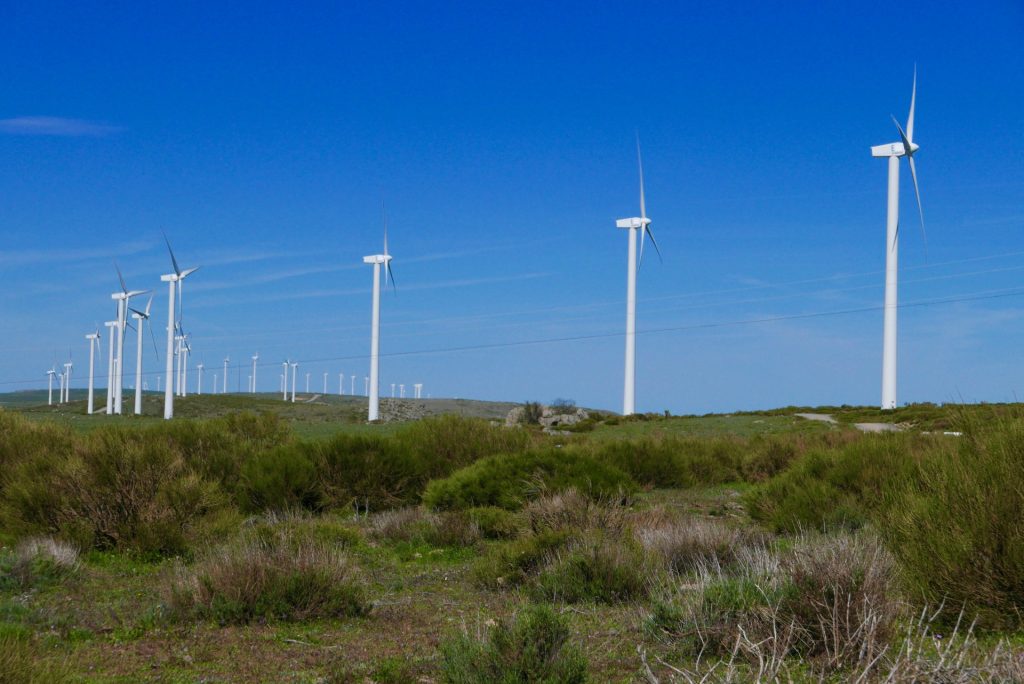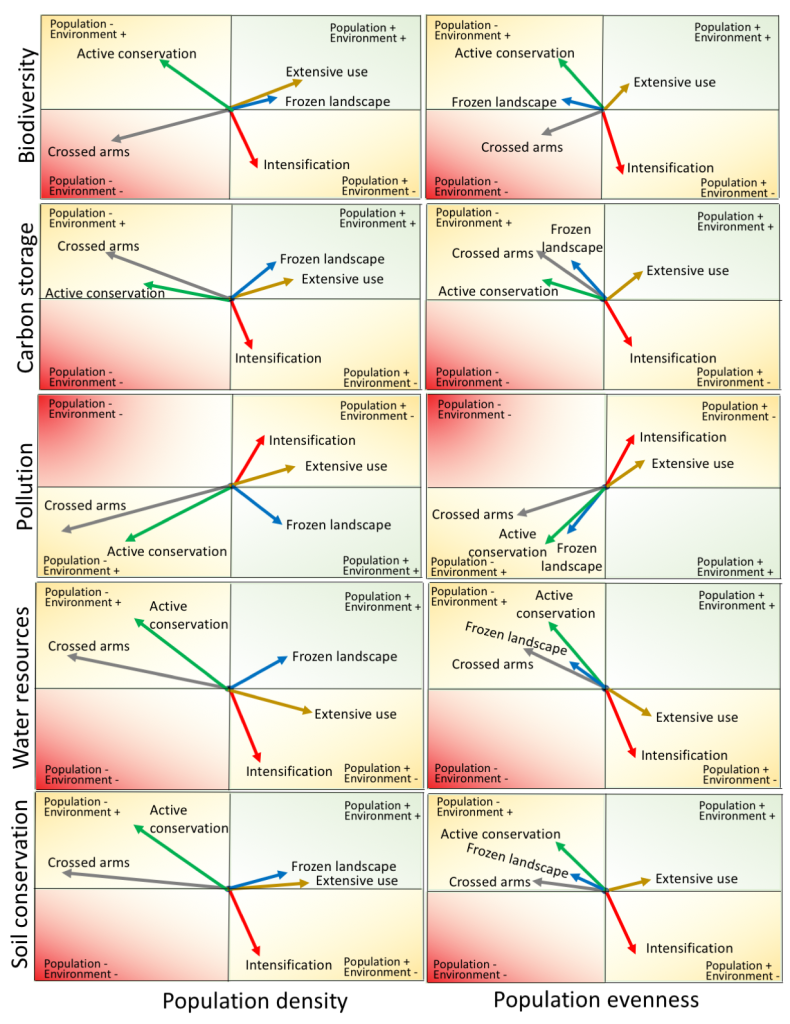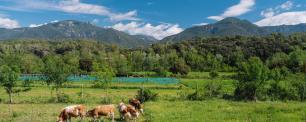Extensive land use: the best strategy for reversing rural depopulation and protecting nature
In the 1920s, Spain’s population was distributed throughout the country, where there was a mosaic of crops, livestock and meadows. Today, the picture is radically different. According to National Institute of Public Administration (INAP) data, rural areas in Spain lost 5.3 million inhabitants between 1960 and 2021. Reversing that situation is one of the main objectives of current policy. However, in a time of biodiversity crisis, repopulating rural environments could be seen as a threat to nature conservation. Is there a scenario that reconciles the two challenges? For the first time, scientists have attempted to answer that question from an ecological perspective, and they have concluded that extensive land use would be the approach most favourable to achieving both objectives, including activities such as agritourism, regenerative agriculture or well-managed renewable energy facilities, among others. That is the main finding of a review article recently published in People and Nature, a journal of the British Ecological Society. The study behind the article was led by CREAF and the Autonomous University of Barcelona (UAB), and also involved experts from other institutions.

“Encouraging activities that entail making extensive use of land enables people to organize themselves in small settlements, presenting opportunities for local work and trade. At the same time, such activities can have a positive effect — or, at least, minimize negative effects — on the natural environment. An example would be promoting silvopasture, which can reduce the risk of fires, or agroecological practices, which provide food while reducing soil and water pollution"
PACO LLORET, CREAF researcher, UAB lecturer and the article’s lead author.
Extensive land use encompasses a wide range of activities that benefit the natural and social environment by fostering a local, sustainable economy. They include agritourism (which might involve birdwatching routes, for instance); extensive livestock rearing and silvopasture, which maintain meadows and support native bird and butterfly species; organic and regenerative farming, both of which reduce chemical fertilizer use and pollutants, revitalize land and increase soil carbon sequestration; and diversification in terms of renewable energy facilities (solar and wind power). Initiatives aimed at recovering natural processes, such as improving ground cover, are also included.

To carry out their study, the authors created a new methodology, which they used to analyse five scenarios in different areas of inland Spain: (1) carrying on as before without intervening in any way, which involves continuing with policies that have led to rural depopulation and generated different environmental impacts; (2) implementing conservationist policies only, with the aim of bringing about an increase in natural areas; (3) promoting intensive activities, such as monoculture on vast swathes of land, intensive livestock rearing, or coal-based industry or power generation; (4) keeping the distribution of the landscape exactly as it is at present, so that natural habitats, croplands and pasture lands are preserved as they are today; and (5) promoting the extensive use of land. The authors reviewed the scientific literature relevant to Spain to determine how each of the five scenarios would affect five environmental indicators (biodiversity, carbon storage, pollution, water resources, and soil conservation) and the demographic trend (i.e. whether the population would grow, shrink or remain stable) in rural areas. “Our analysis did not focus on specific places,” stresses Lloret.
No one-size-fits-all solution
"There is no solution that scores very highly across the board, but making extensive use of land is the option with the most positive trend, for both the population and the environmental indicators"
“Our results show that there is no solution that scores very highly across the board, but making extensive use of land is the option with the most positive trend, for both the population and the environmental indicators,” remarks Fernando Valladares, a researcher from Spain’s National Museum of Natural Sciences (MNCN-CSIC) and a co-author of the article. In any case, the option in question could be combined with others, depending on the objective pursued and the situation in each area. “Our methodology helps us analyse what would happen if we were to go down one path or another,” notes Lloret. If the main goal were to protect certain species in a natural park, for example, the priority would be implementing conservation policies, which might entail restricting human activity. Doing so would lead to significant improvements in the biodiversity, water resources and soil conservation indicators; however, as Lloret points out, it would also result in a negative demographic trend.
Promoting intensive activities is the lowest-scoring option for all the environmental indicators because, among other things, it would worsen pollution by increasing nitrate levels in soil, reduce biodiversity by simplifying ecosystems and causing the loss of insects and pollinators, and deplete water resources without generating population growth. While it is true that stepping up intensive activities can result in a rise in population, the increase involved would be smaller than that achievable with extensive activities; furthermore, such growth is often only temporary. As for the option of carrying on as before without intervening, the authors say it would not solve the problem of depopulation, which would continue apace.

The authors also explain that while keeping habitats unchanged would have a positive effect on some indicators, this would not be the most effective strategy. Their reasoning is that ecosystems are dynamic, not static. For instance, today’s climate situation and pollution levels are very different from those of the 1920s, when there was a great deal of pressure on land due to overgrazing, agricultural practices, irrigation, and timber extraction, which led to deforestation and soil erosion. On the other hand, some elements of Spain’s biodiversity, such as certain species of birds (Montagu’s harrier, for example) and butterflies, require the open spaces that are a legacy of human interaction with the land. “So, to look towards the future, it is crucial to know how our ancestors and species linked to our cultural history modified the landscape; understanding their origins can help us preserve them now,” states Adrián Escudero, a researcher at Rey Juan Carlos University and another of the article’s co-authors. “However, it is important to be aware of the current context too,” he adds.
“We hope that land managers will use the methodology we have developed when they make decisions aimed at curbing rural depopulation,” concludes Lloret.
“We hope that land managers will use the methodology we have developed when they make decisions aimed at curbing rural depopulation,” concludes Lloret.
The article’s fourth co-author, alongside Paco Lloret, Adrián Escudero and Fernando Valladares, is Joan Lloret, who works at the Spanish Institute of Geosciences (IGEO) and the Complutense University of Madrid.
Paco Lloret also signs a more extensive informative article in his blog space ‘Festina Lente’!
Reference article: Lloret, F., Escudero, A., Lloret, J., & Valladares, F. (2024). «An ecological perspective for analysing rural depopulation and abandonment». People and Nature, 6, 490–506. https://doi.org/10.1002/pan3.10606







